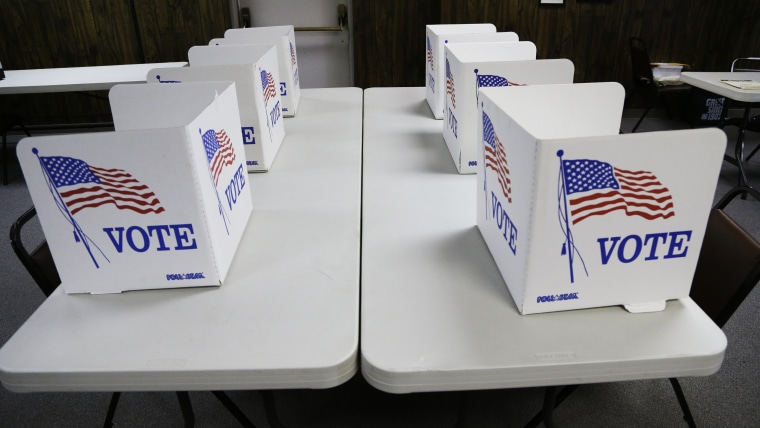In many recent election cycles, observers and pundits look for a key demographic that's positioned to help drive the results. The analysis tends to be overwrought, but it leads to
chatter about constituencies such as Soccer Moms, NASCAR Dads, Security Moms, Office Park Dads, et al.
This year, however, there's no overused label -- not yet, anyway -- but there is a demographic shift emerging as one of the election's most important: the gap among white voters with college degrees and those without.
We saw
some hints of this a couple of months ago, when polls showed Hillary Clinton narrowly leading among college-educated whites, while Donald Trump dominated among white voters without degrees.
This dynamic is holding, and by some measures, intensifying.
Slate's Jim Newell had
a good piece on this yesterday, making the compelling case that "the educational split among white voters is the defining characteristic of this election."
The hinge point in this election is education levels among white voters. In 2012, according to exit polls, Romney won whites overall, with 59 percent to Obama's 39 percent. Education levels didn't make much of a difference: Romney won 61 percent of non-college whites and 56 percent of college-educated whites. Now look at the CNN/ORC poll, which, caveats aside, shows what a winning Trump coalition would look like. Like Romney, Trump is winning whites by about 20 percentage points, 54 to 33 percent, and he's in the teens among nonwhite voters. Look under the hood a little more, though, and that breakdown of white voters is split. Trump has 66 percent of whites without college degrees to Hillary Clinton's 23 percent. Meanwhile, Clinton leads among white college graduates, 49 percent to 35 percent.
As
The Atlantic's Ron Brownstein has
documented more than once, no Democratic presidential candidate has carried college-educated whites "in the history of modern polling dating back to 1952." Think about that: since 1952, Americans have voted in 16 presidential elections. When it comes to white voters with college degrees, Democrats have gone 0-for-16 -- including several races Dem candidates won with relative ease.
And yet, this year, multiple independent polls show Clinton narrowly ahead with this constituency. But if that's the case, why isn't she crushing Trump?
Because just as white voters with degrees have made a surprising shift towards Clinton, white voters without degrees have made an equally dramatic move in Trump's direction. What was a modest advantage for other recent GOP nominees is a massive lead for this year's Republican candidate.
Newell's
Slate piece added that the dynamic is especially acute among whites, but the education split applies across all races and ethnicities, too.
The gap between Romney's support from college-educated whites and non-college whites was 5 percentage points. It is now, in this poll, 31 points. Overall, according to 2012 exits, Obama won college graduates by 2 percentage points, 50 to 48 percent, and non-graduates by 4 percentage points, 51 to 47. According to this poll, Clinton is leading among college graduates by 27 percentage points, 56 to 29 percent and losing among non-graduates by 15 percent points, 36 to 51 percent. This, right here, is the election.
Looking ahead, this is bound to affect how the candidates shape their messages in the post-Labor-Day stretch. It'll be worth watching to see how, exactly, the campaigns proceed.
